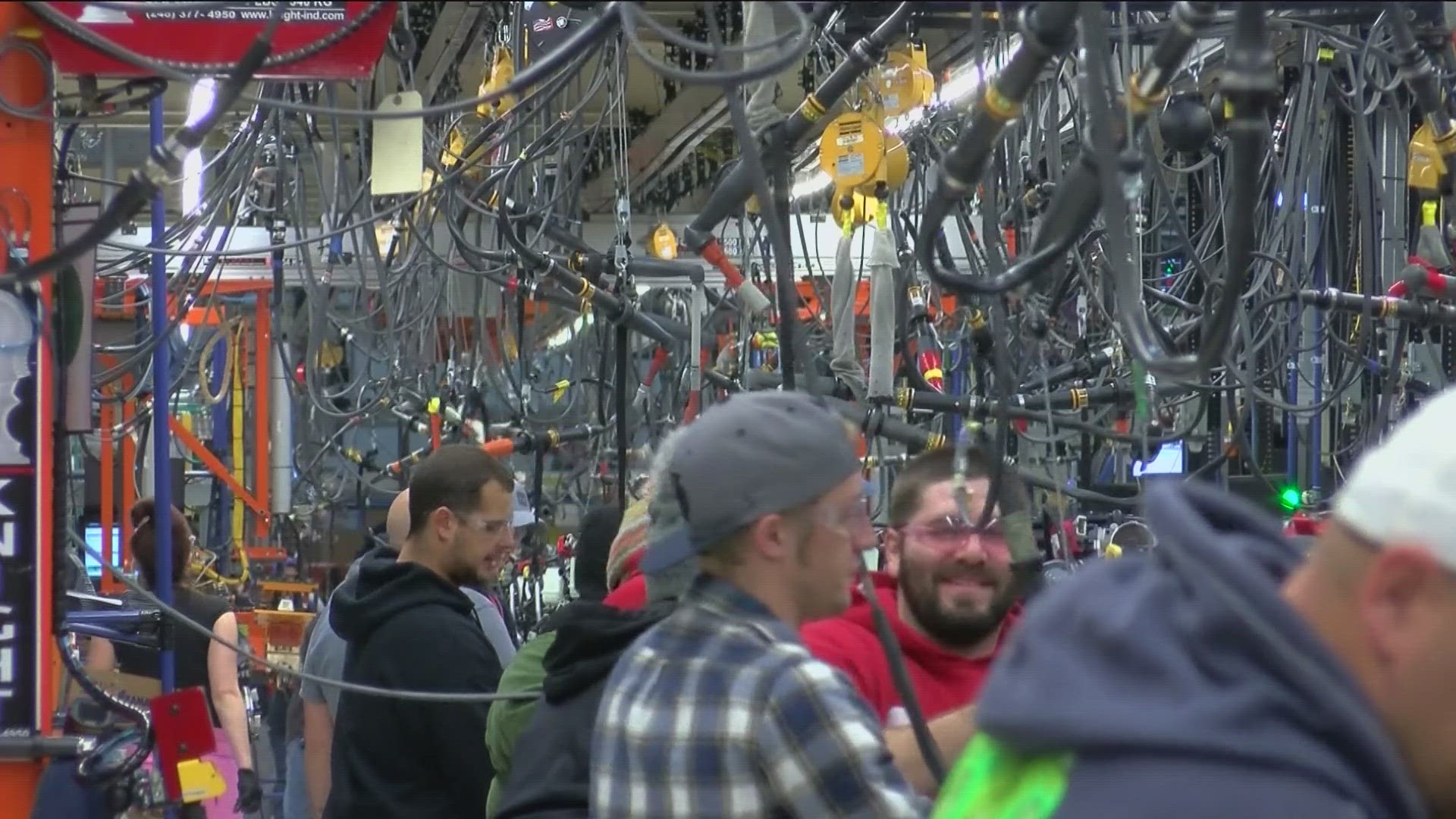TOLEDO, Ohio — Workers at the Toledo Assembly Complex and the Mack Assembly Complex in Detroit received a notice from Stellantis Thursday that thousands of them could be laid off next year.
But why now?
Art Wheaton, a labor studies professor at Cornell University in New York, said Stellantis' official line is that they need to cut back because of emissions rules from the California Air Resources Board.
"It's literally designed to make less production so that they're not shipping any more gas engines to the 14 states that CARB is counting," Wheaton said. "They're trying to reduce the production. The easiest way for Stellantis to reduce the production is to go from three shifts to two shifts."
Wheaton and Jeff Gilbert, an automotive reporter for Detroit's WWJ radio, said there might be another reason behind the layoffs that Stellantis is less likely to talk about: sagging sales.
"The Wrangler and the Bronco have increased sales overall of off-road vehicles," Gilbert said. "But for the Wrangler's share, it shrunk those sales. And there are pretty big inventories of the Wrangler, so that's an issue at work as well as the emissions issues in California."
The Toledo Assembly Complex produces the Wrangler. It all adds up to thousands of people in Toledo and Detroit preparing to miss out on a steady paycheck.
According to Stellantis, temporary workers will be the largest group affected by the layoffs representing about 84% of the total layoffs. The announcement came about a month after the automaker reached a new contract with United Auto Workers members that most analysts hailed as a victory for workers, including gains for temporary workers.
"Then they get rewarded by getting discarded, or at least laid off," Wheaton said. "Hopefully they can land a job someplace else or in another sector."
The layoffs are not a certainty, though. Gilbert said Stellantis has been creating a level of skepticism about the whole move, saying the jobs could come back again in the future. He also says there are insider whispers in Detroit that it's all a ploy to change the emissions policies.
"Some analysts have suggested that it may be political theater putting pressure on the UAW, hoping the UAW will put pressure on President Biden and hoping President Biden will put pressure on California," Gilbert said.
So, workers are left to hold their breath while they wait and see how it plays out.

